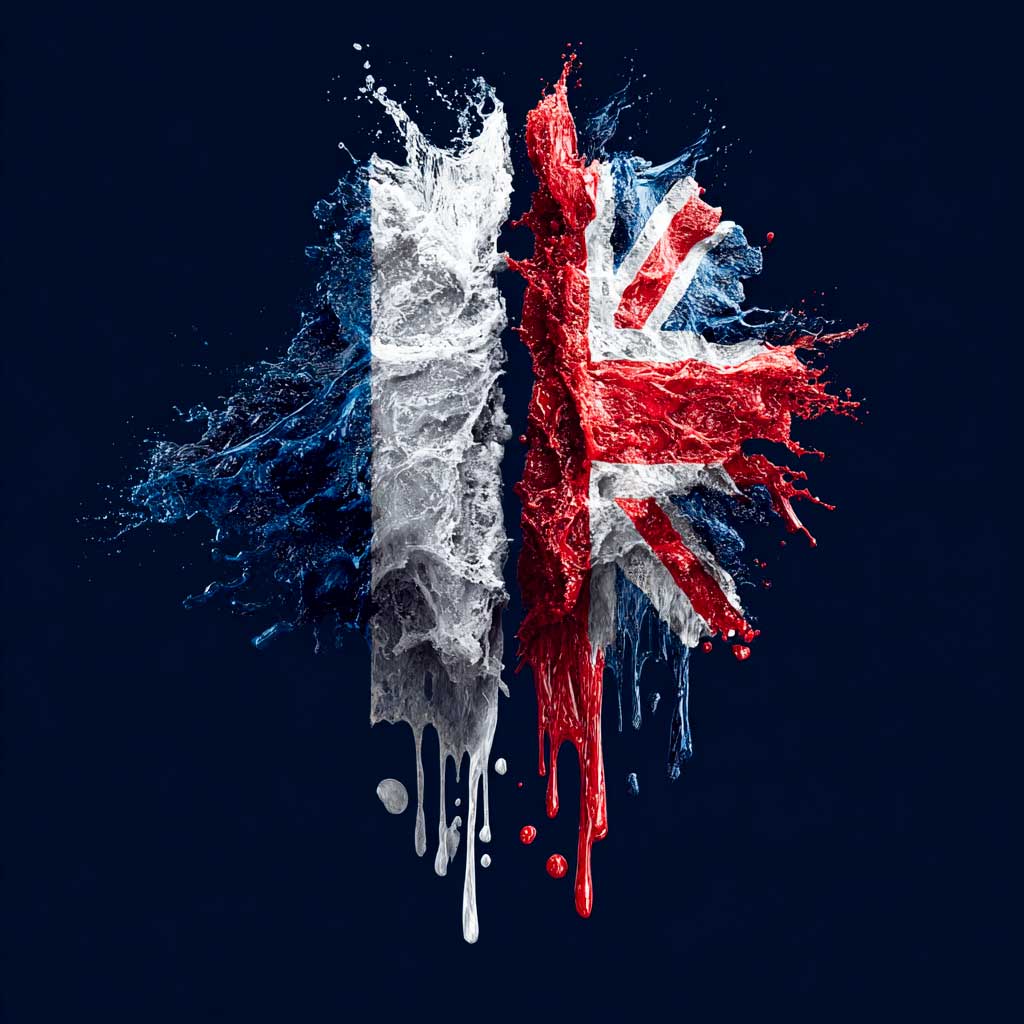
London and Paris are strengthening their military and nuclear cooperation, focusing on missiles, AI, and a joint force for strategic autonomy.
On July 10, 2025, the United Kingdom and France announced a strengthening of their military cooperation through several major initiatives. This alliance, which includes increasing production of the Storm Shadow missile, developing an upgraded version, and joint efforts in nuclear cooperation, artificial intelligence applied to weapons, and a future Combined Joint Force, comes at a time of geopolitical instability. Tensions over US foreign policy, including lingering doubts about Washington’s reliability in defending its European partners since Donald Trump’s decisions on Ukraine and tariffs, have accelerated the desire of the two Western military powers to consolidate their strategic autonomy.
This dynamic is part of a reorientation of European military priorities, with France and the United Kingdom, both nuclear powers, seeking to take decisions independently of the US-dominated NATO agenda. The program launched is based on industrial partnerships, enhanced operational integration, and joint projects with high technological value. This initiative could also serve as a model for other European Union members considering pooling their defense efforts without relying exclusively on the US. Franco-British military cooperation is thus becoming a concrete lever for anticipating future threats and asserting an autonomous capacity for global intervention.
Industrial revival around the Storm Shadow missile
A strategic and industrial choice
The Storm Shadow/SCALP missile is at the heart of the agreement announced between Paris and London. The two countries are planning an immediate increase in production, led by MBDA, the Franco-British manufacturer. Used extensively by Ukraine against Russian forces, this long-range (over 250 km) air-to-ground cruise missile has proven its effectiveness on the Ukrainian battlefield. However, French and British stocks have dwindled as deliveries have intensified, prompting coordinated replenishment.
An industrial contract estimated at around €400 million (£345 million or US$430 million) has been signed to restart the assembly line. It provides for accelerated production from early 2026 with a target of 200 additional missiles by the end of 2027. In addition to replenishment, the agreement includes the development of an improved model with a more jam-resistant guidance system and increased bunker penetration capability.
Strategic cooperation on two levels
This relaunch is not just logistical. It aims to standardize the deep strike capabilities of both countries by facilitating interoperability between the French Rafale and British Typhoon aircraft. Joint tests are planned in Biscarrosse and at the QinetiQ test site in Wales. This will strengthen operational synergies and reduce future development costs. Military cooperation on the Storm Shadow missile therefore goes beyond mere production. It establishes a shared doctrine on the use of high-precision air-to-ground weapons in high-intensity contexts.
A strengthened alliance around nuclear deterrence and military AI
Research sharing and convergence of doctrines
In parallel with the missile initiative, Paris and London have agreed to accelerate their nuclear cooperation, particularly in the field of strategic submarines and nuclear warheads. Discussions are focusing on the partial harmonization of weapons simulation and testing systems through an extension of the Franco-British center in Valduc-Aldermaston, which has been operational since 2010. This often discreet partnership remains crucial at a time when the modernization of arsenals is becoming strategic in the face of Russia and China.
Cooperation now extends to joint analysis of deterrence doctrines, particularly on the issue of response to hybrid attacks, including cyber threats. Regular exchanges between the chiefs of staff of the two countries have been established since early 2024 to coordinate approaches. This synergy would allow for greater strategic clarity and avoid political misalignment in crisis situations.
Development of artificial intelligence-guided weapons
Another aspect of the agreement concerns the development of autonomous and semi-autonomous armed systems, incorporating AI algorithms for target detection, classification, and trajectory optimization. Joint projects are underway between Thales, BAE Systems, and Safran, with demonstrators planned for 2028. The stated goal is to master the OODA loop (Observe – Orient – Decide – Act) more quickly than adversaries such as Russia and China.
Initial simulated tests conducted in the United Kingdom at RAF Lossiemouth have shown a 25% reduction in targeting time while maintaining final human control. While this technology raises legal and ethical issues, its strategic importance is undisputed: whoever controls decision-making speed on the battlefield gains a decisive tactical advantage.

A joint operational force: the “Combined Joint Force”
An autonomous European intervention capability
The announcement of a Franco-British Combined Joint Force aims to formalize a joint projection capability, with an integrated headquarters and pre-assigned resources. The unit would consist of 10,000 military personnel, divided between the two countries, who could be mobilized in less than 10 days. It could operate under a bilateral or European mandate, outside the strict framework of NATO. Initial alert status is planned for 2026, with joint exercises in Norway and the Sahel.
The units identified include elements of the British 16 Air Assault Brigade, French marine commandos, A400M transport aircraft, and several frigates and submarines. The command center would be shared between Mont-Valérien and Northwood HQ, with a common secure communications network.
A response to transatlantic uncertainties
This development responds to a growing concern: the reliability of US commitments. Since Donald Trump imposed restrictions on arms transfers to Ukraine and reintroduced punitive tariffs on European goods, Paris and London have been reviewing their strategic posture. Both countries believe that exclusive dependence on NATO has become structurally risky. By acting together, they seek to avoid a capability gap in the event of a partial or complete withdrawal of US support.
In addition, this joint force also serves as a diplomatic tool. It sends a clear message to regional powers—Russia, Iran—that Europe can act quickly, without prior coordination with Washington. Franco-British military cooperation is thus taking on a broader geopolitical dimension, redefining the internal balance of power within Europe.
The partnership announced on July 10, 2025, between the United Kingdom and France is not limited to a few industrial projects. It marks a shift in the conception of European security, based on technological, capability, and doctrinal pillars. Nuclear cooperation, smart weapons, and joint forces are shaping a common ambition: to ensure autonomous defense against systemic threats, whether state-based or hybrid. The realism displayed by London and Paris seems to meet the expectations of a European defense capable of asserting itself without depending on an Atlantic partner whose reliability is eroding.
War Wings Daily is an independant magazine.